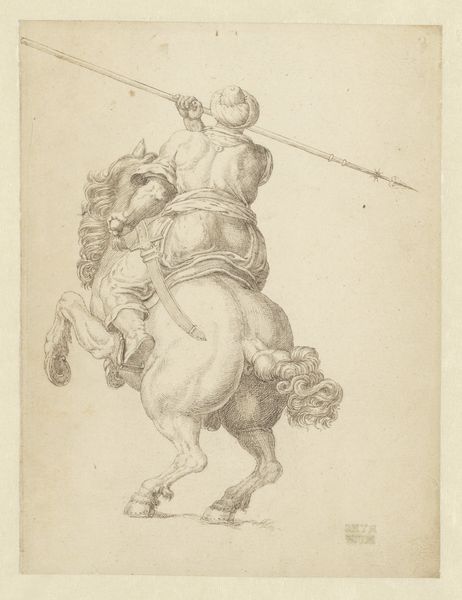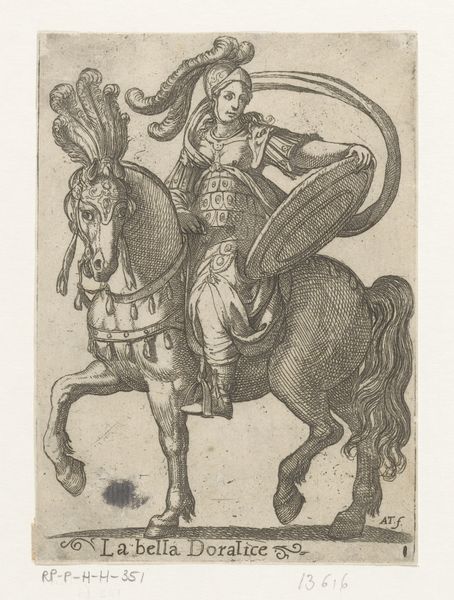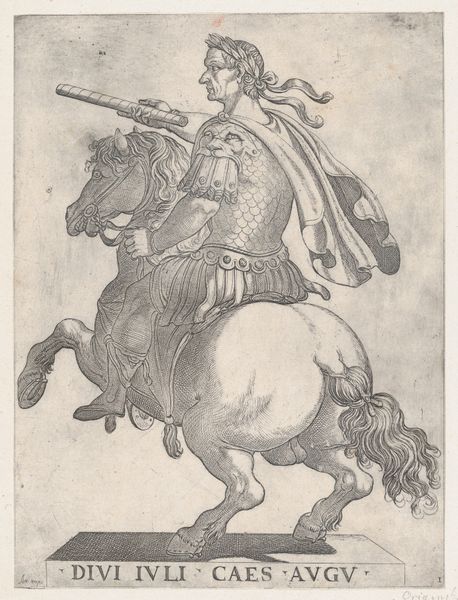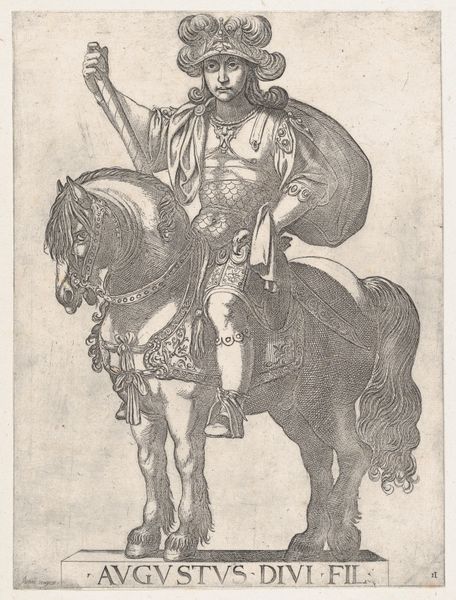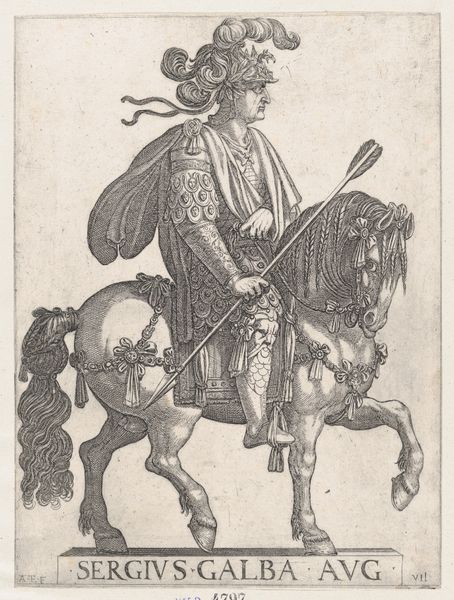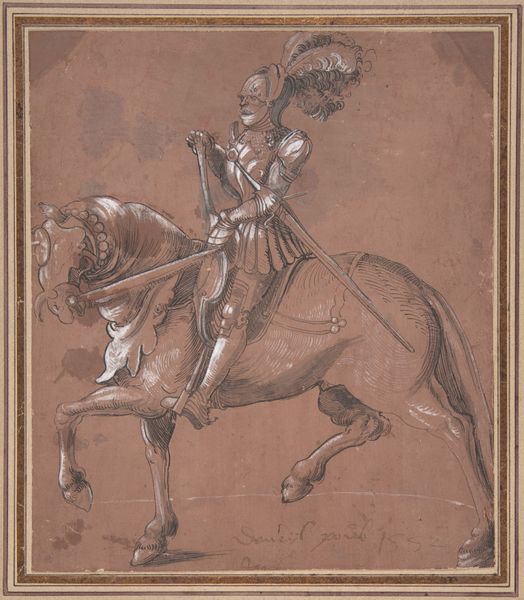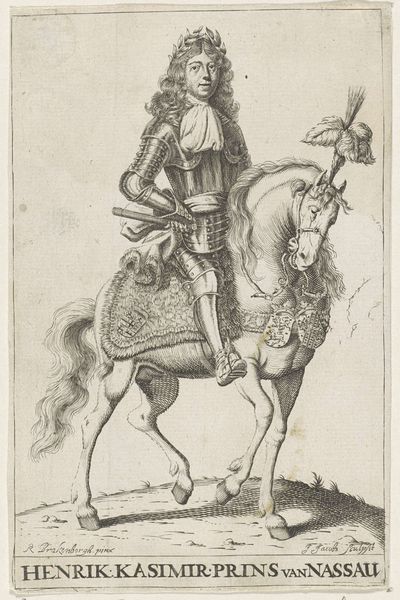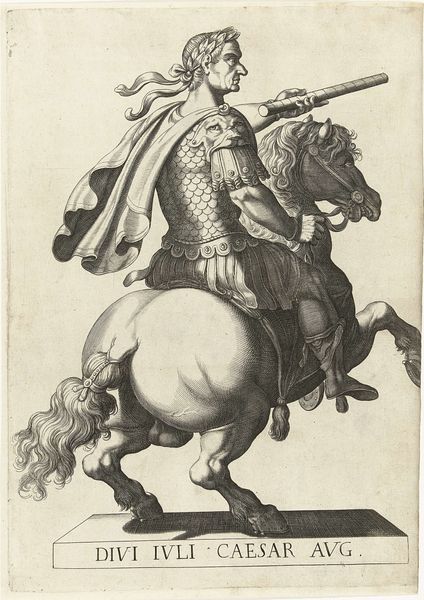
drawing, print, pencil
#
pencil drawn
#
drawing
#
baroque
# print
#
pencil sketch
#
charcoal drawing
#
figuration
#
pencil drawing
#
soldier
#
pencil
#
line
#
history-painting
#
sword
Dimensions: sheet: 7 1/4 x 5 1/2 in. (18.4 x 13.9 cm)
Copyright: Public Domain
Curator: So, let's turn our attention to this drawing, "An Infantryman Drawing his Sword," created sometime between 1640 and 1691 by Jacob Matthias Weyer. It's currently residing here at the Metropolitan Museum of Art. What’s your initial reaction to this glimpse into a soldier's world, Editor? Editor: My first thought? It's surprisingly... vulnerable. Despite the armor and the drawn sword, there’s a sense of precariousness. Maybe it's the almost tentative line work or the fact that it’s a drawing rather than a heroic painting. He feels caught mid-action, about to unsheathe his sword, the movement almost fearful. What do you see in it? Curator: That vulnerability you pick up on… I see it echoed in the symbolism. The sword, yes, is aggression and power, but drawing it is also a moment of intense decision. Is it defense? Is it attack? It's this pause before action, thick with potential, a metaphor perhaps for a larger societal conflict of the time. And, like you observed, done with such a light and sketchy hand. The Baroque loves that sort of dynamism. Editor: Exactly. This Baroque dynamism, it’s almost a question here, rather than a statement. What narratives do those forms evoke for you beyond battle, Curator? Curator: For me, the interesting tension comes from what the work is *not* telling us. Weyer gives us the man, the posture, the weapon, but we’re left to fill in the reasons why. History painting usually spells it out. Here, the open narrative almost feels psychological. Editor: Like an archetype playing out its destiny, I would imagine the drawing's original audience were highly sensitized to symbolic interpretations of every tiny detail in his posture, helmet, weaponry. Today, it hits us with the immediacy of potential, I agree, but cultural memory likely added another very strong emotional layer. Curator: You're right. We've perhaps lost that intimate language, or need to re-translate it now. But it's still whispering. Still provoking thoughts and feelings. Editor: It makes you wonder about the untold story behind a single moment captured, doesn’t it? What stories lay beyond the single scene captured? Curator: Precisely, leaving a ghostly echo in the room. It's exciting when artwork speaks through silences.
Comments
No comments
Be the first to comment and join the conversation on the ultimate creative platform.
